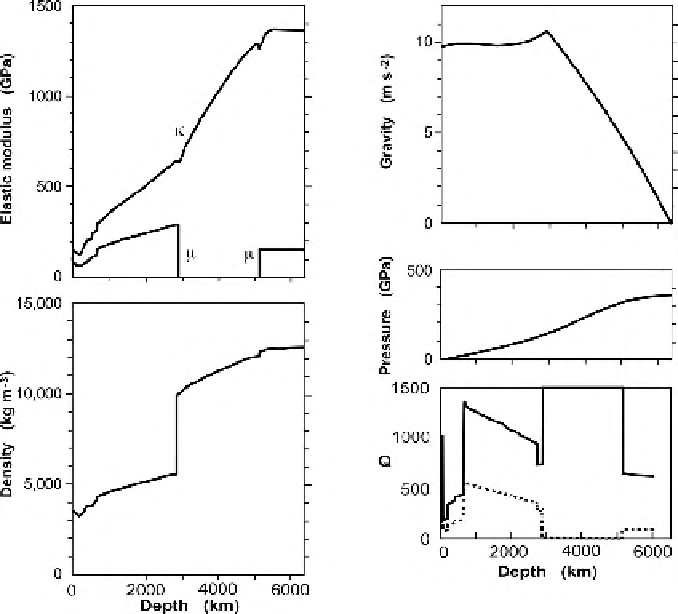Geoscience Reference
In-Depth Information
Figure 8.5.
The elastic
moduli
K
(bulk),
µ
(rigidity), density
ρ
,
acceleration due to
gravity
g
, pressure
P
and
quality factors
Q
s
(dashed
line) and
Q
p
(solid line) in
the interior of the Earth.
The elastic moduli and
pressure are given in GPa.
To convert GPa into
kilobars (kbar), multiply
by ten. Thus, the pressure
at the centre of the Earth
is 361.7 GPa or 3617 kbar.
(After Hart
et al
.(1977),
Anderson and Hart (1976)
and Montagner and
Kennett (1996).)
under increasing pressure and temperature. The phase changes thought to occur
in the transition zone are olivine to spinel and pyroxene to garnet, at about 400 km,
and spinel to post-spinel forms, at about 700 km. Increases in density of about
10% are associated with these phase changes and are sufficient to account for the
self-compression model's low estimate of the mantle mass.
Figure 8.5 shows a density model for the Earth that is based on the Adams-
Williamson equation and the additional constraints provided by free oscillations,
moment of inertia and total mass. These models are continually being updated and
modified, but the densities are unlikely to change substantially from those shown
here, though the details of the model, particularly in the transition zone and inner
core, may alter. After a density model has been determined, it is straightforward
to work backwards using Eqs. (8.1) and (8.2)todetermine the elastic moduli
(Fig. 8.5).
2
µ
=
ρβ
(8.19)
2
4
3
K
=
ρα
−
β
2
(8.20)
Table 8.1 provides a comparison of the volume, mass and density of the Earth
taken region by region. We know most about the structure of the crust, yet it

